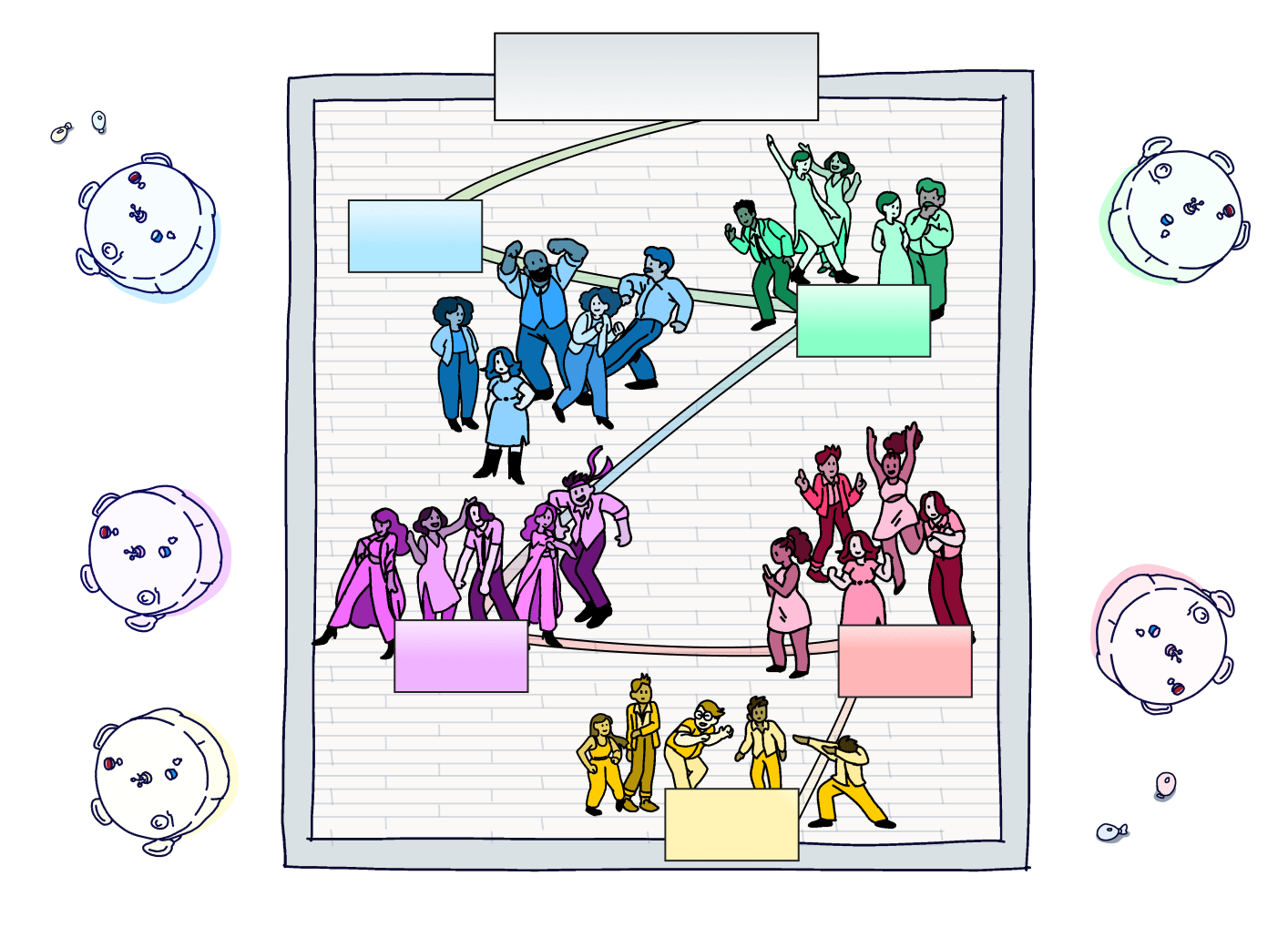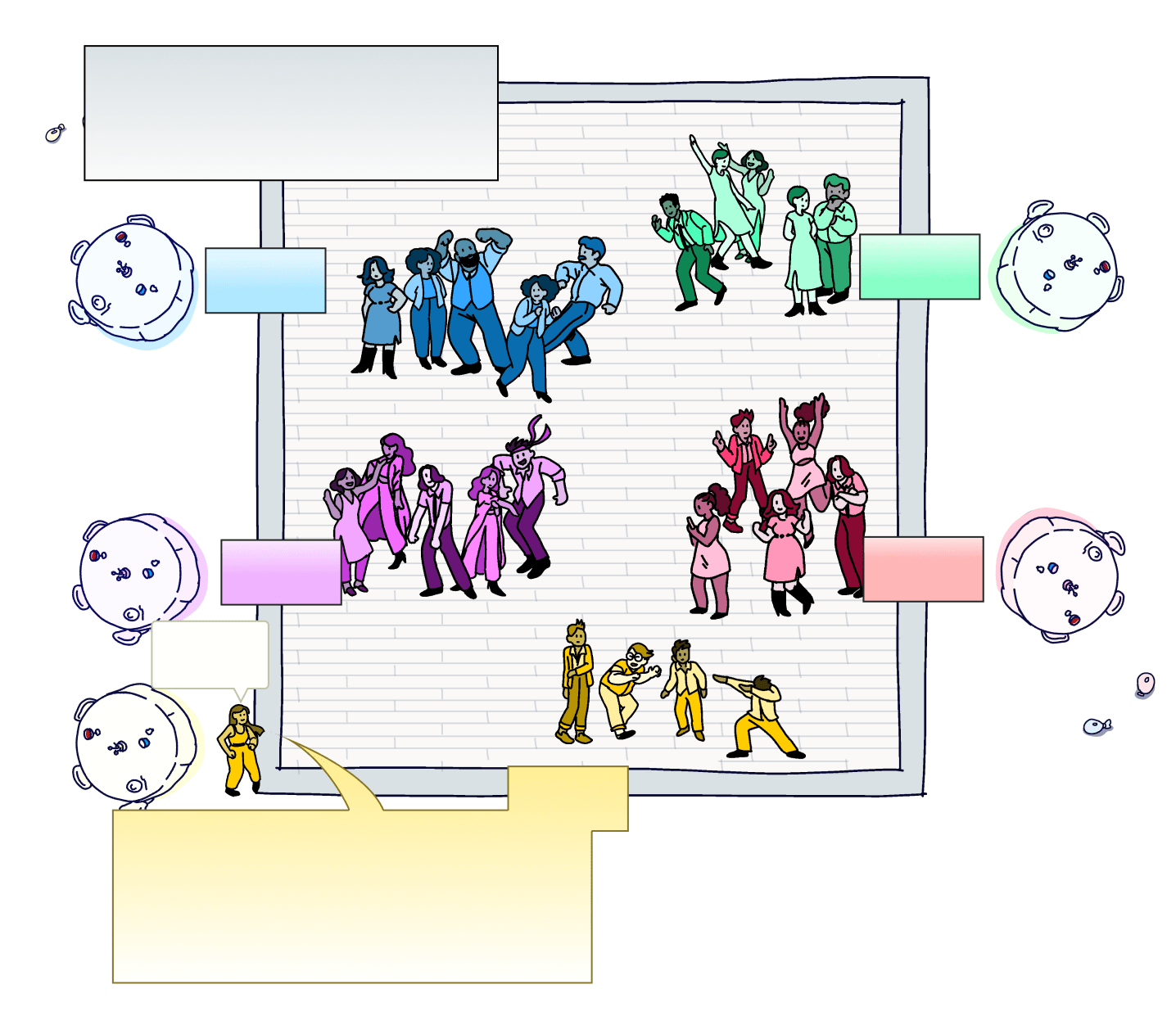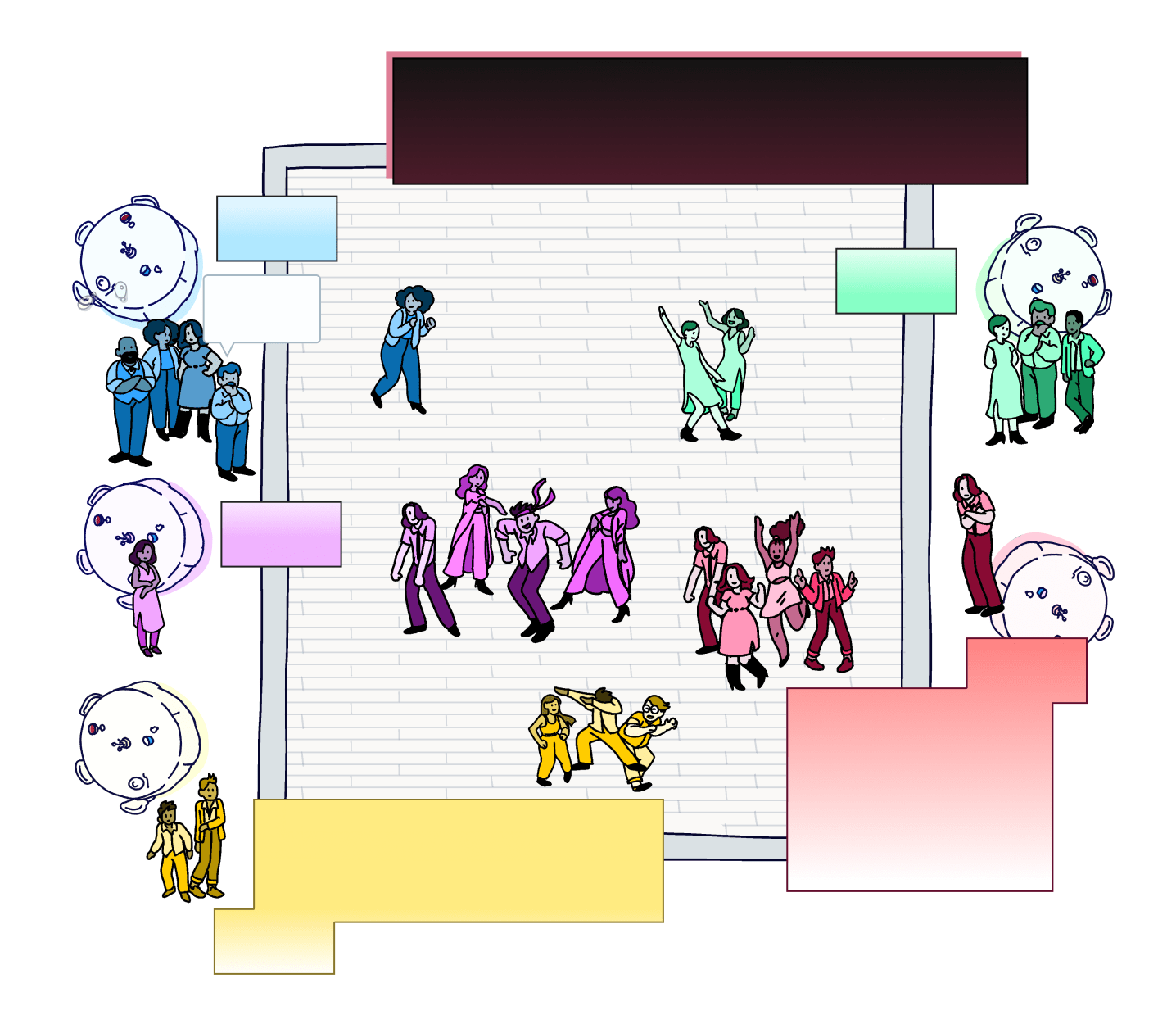This is a hypothetical wedding dance floor.

The crowd on our dance floor is equally distributed by age.

Some age groups are more likely to recognize certain songs than others.
(we collected a 3.5 million data points on what songs people know)
Suppose we play “Stayin’ Alive” by the Bee Gees , a song with almost universal recognition.
About 1 in 10 teenagers don’t recognize this song.
Let’s assume this teenager, who doesn’t know “Stayin Alive,” exits the dance floor.

Playing “Get Low” by Lil Jon will draw a different crowd.
“Get Low" has a thinning effect on the crowd. Almost no older people know it.

Play “Smack That” by Akon , released in 2006, and it’s your best shot at isolating people in their 20s.